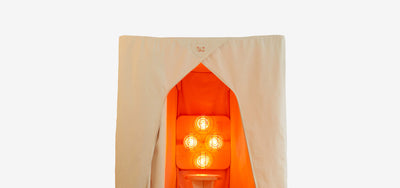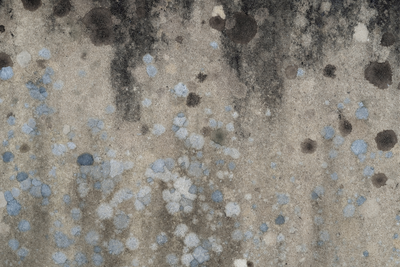How to prevent and treat mould at home

From the natural spray that prevents mould growth to the very best air filter and tons of tips on how to keep mould at bay around the house, dive into our comprehensive guide to combatting mould:
Book a professional mould investigation
If you suspect that your mouldy property may be behind your unexplained health issues (and if your budget allows!), having your house professionally surveyed could help provide some answers and solutions. But what does a mould investigation usually involve? Building Forensics, a reputable company that carries out mould surveys in the UK, include the following in their investigative service:
- Investigating hidden and visible, live and dead mould
- Toxic mould investigation and assessment of potential health hazards
- Mould sampling, lab analysis and report
- Indoor air quality assessments
- Technical support and advice
- Legal and medical support
- Written reports
We've also heard good things about Hutton + Rostron Historic and Contemporary Building Surveyors, who carry out surveys into damp and dry rot.
“Considering most mould problems are behind walls, in attics, or crawl spaces, you need someone who can properly inspect these areas for water damage (since mould cannot grow without a water source),” writes Michael Rubino, author of The Mold Medic. “And when you test areas around the water damage, you can pinpoint exactly where the mould growth originated and how it’s spreading.
“Sometimes though, even if mould removal is done correctly, problems can recur,” says Conscious Spaces founder Tara. “Which is why you need some tricks up your sleeve to help tackle regrowth and prevent mould growth in the first place.”
Thankfully, if you're in rented accommodation, or unable to afford or commit to works to your property, there are still plenty of ways to tackle and prevent mould. Instead of reaching for the bleach, which can do more harm than good by disturbing and releasing more mould spores, try our non-toxic fixes, prevention tactics and longer-term solutions:
Top tips to keep mould at bay
- Check for signs of damp and mould every few weeks, particularly in the problem areas; exterior corners, behind furniture and along windowsills.
- Wipe away the condensation on windows every morning. Pay particular attention to rooms where more than one person sleeps or where clothes are dried, as these will likely have the most.
- Move furniture away from walls. Just a few inches will facilitate much-needed air movement.
- Use antimicrobial materials in your interiors wherever possible. Naturally waterproof and resistant to mould and mildew, cork is great for flooring, mats and even wall finishes.
- Keep your home heated in cold weather, but remember to open the windows to increase air circulation and boost ventilation. This might sound contradictory, warming things up only to let some of the hot air out, but it's the best way to mimic a more Mediterranean climate (hot and dry), in which it's harder for mould to thrive.
- Deep clean your space regularly. This will help remove any existing spores and reduces the likelihood that new spores will stumble on an appealing spot to start growing. Cleaning also helps remove dust and other particles that mould likes to eat.
- Try using natural antifungal agents in your cleaning. Lime, anise, tangerine and pau d’arco essential oils have all been shown to remove mould and prevent it from coming back, even at 100% humidity.[1] Plus, they smell amazing!
- Add moisture-absorbing houseplants to your interior for a natural way to keep humidity levels down.
- Fix leaks and clean up spills ASAP to prevent mould from making itself at home.
- Monitor air humidity using a thermohygrometer or a more advanced air quality monitor.
- If you have reoccurring mould, it might be worth taking a sample to work out which species are present. Identifying mould will help you discover the source and how best to tackle it.
- Consider changing the use of an area, improving natural ventilation, or installing local exhausts (for example, an extractor fan in the bathroom), or using a dehumidifier.
- If the mould is in a particular room, limit the amount of time you spend there and keep the door closed and the window open.
Of course, if the option is available to you, you can always move out of a mouldy property. While this might not be ideal or convenient, if toxic mould is causing you considerable health concerns, sometimes the best thing to do is remove yourself from the affected environment entirely.
Our favourite mould prevention products
- We recommend trying Micro Balance’s range of 100% natural mould prevention products, from anti-mould spray to laundry additive and air purifying candles. Made using natural botanical ingredients (including citrus seed extracts) that treat indoor environments for mould and mycotoxins, the Micro Balance EC3 Mould Solution Spray is highly effective and non-toxic. This natural spray is safe for use on all surfaces, including floors, walls, furnishings, clothes, shoes, car interiors – and even pets. The spray works on contact and so can only treat the areas where applied. It works best when used frequently to prevent a build-up of mould in your home, office or car. Shop Micro Balance products here.
- Opt for probiotic cleaning products. 100% natural, they’re proven to actively feed on mould spores as well as dust mite faecesand other allergens. Find We Are Probiotic products in the Conscious Spaces Shop.
- Invest in an air purifier with a HEPA filter to catch and remove mould spores and mycotoxins from the atmosphere. The smaller the particles your air filter can remove, the better, as mycotoxins are seriously small. After testing many air filters, one brand consistently comes out top for performance and value for money: Radic8. Radic8’s world-leading technology clears the air of mould, viruses, bacteria, VOCs, toxic gases and allergens in a single air pass. Shop Radic8 air filters here.
- Consider using a dry fogger, which disperses a mould-killing mist of antimicrobial anti-mould solution (like this one) into the atmosphere, evenly coating all surfaces and stopping mould spores from spreading. You can use mould foggers to treat an entire room, small spaces like cupboards or shower cubicles, or individual pieces of furniture, clothes or books. Discover our selection of mould fogger kits here. Don’t fancy buying a fogger? Why not rent one from us instead. Contact us to find out more about fogger rental.
References
[1] https://www.sciencedirect.com/science/article/abs/pii/S0964830507001746










































